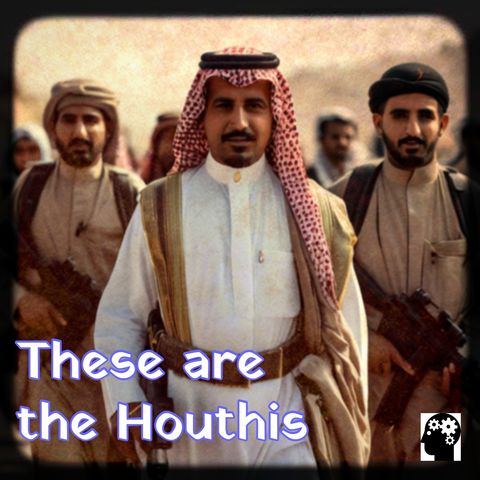
Contactos
Información
The Houthi Movement: Origins and Influence The Houthi movement, also known as Ansar Allah, emerged in the 1990s within the Zaidi Shia community in northern Yemen. Initially led by Hussein...
mostra másThe Houthi movement, also known as Ansar Allah, emerged in the 1990s within the Zaidi Shia community in northern Yemen. Initially led by Hussein Badreddin al-Houthi, the movement aimed to revive Zaidi traditions and counteract what they saw as the Yemeni government's neglect and discrimination. The Zaidi Shia form a significant minority in Yemen, primarily based in the mountainous regions of Saada province.
Over time, the Houthis evolved from a religious and cultural revivalist group into a potent political and military force. Their transition was driven by a combination of local grievances and broader regional dynamics.
The early 2000s saw the Houthis engage in multiple conflicts with the Yemeni government, which accused them of seeking to establish a theocratic state. These clashes intensified, especially after the death of their leader Hussein al-Houthi in 2004, which galvanized the movement and deepened its resolve.
In 2014, capitalizing on widespread discontent with the Yemeni government's inability to address economic woes and political corruption, the Houthis seized Sanaa. This dramatic takeover effectively ousted President Abd-Rabbu Mansour Hadi, prompting him to seek refuge in Saudi Arabia.
The Houthi advance alarmed neighboring Saudi Arabia, leading to the formation of a Saudi-led coalition that launched a military intervention in Yemen in 2015. This intervention aimed to restore Hadi to power and curb Iranian influence, as Iran has been accused of backing the Houthis with weapons and training.
The conflict in Yemen has since devolved into a complex and brutal war, characterized by aerial bombardments, ground battles, and a severe humanitarian crisis. The Houthis have demonstrated remarkable resilience, managing to hold their ground despite facing a technologically superior and better-funded adversary.
Their use of drones and ballistic missiles to target Saudi and Emirati infrastructure has added a new dimension to the conflict, illustrating their growing military capabilities.
We hope this topic has been useful to you. Share it if you think it can help other people. Be happy.
We trust this information has provided clarity. Feel free to share it if you believe others might benefit. Stay joyful.
We aim to make this topic insightful for you. If you found it helpful, please share it with others. Stay positive.
Curious to learn more? Check out our curated selection of books on Amazon, offering deep dives into the Houthi movement and the broader context of Yemen's strife. Happy reading!

The Houthi Movement: Origins and Influence The Houthi movement, also known as Ansar Allah, emerged in the 1990s within the Zaidi Shia community in northern Yemen. Initially led by Hussein...
mostra másThe Houthi movement, also known as Ansar Allah, emerged in the 1990s within the Zaidi Shia community in northern Yemen. Initially led by Hussein Badreddin al-Houthi, the movement aimed to revive Zaidi traditions and counteract what they saw as the Yemeni government's neglect and discrimination. The Zaidi Shia form a significant minority in Yemen, primarily based in the mountainous regions of Saada province.
Over time, the Houthis evolved from a religious and cultural revivalist group into a potent political and military force. Their transition was driven by a combination of local grievances and broader regional dynamics.
The early 2000s saw the Houthis engage in multiple conflicts with the Yemeni government, which accused them of seeking to establish a theocratic state. These clashes intensified, especially after the death of their leader Hussein al-Houthi in 2004, which galvanized the movement and deepened its resolve.
In 2014, capitalizing on widespread discontent with the Yemeni government's inability to address economic woes and political corruption, the Houthis seized Sanaa. This dramatic takeover effectively ousted President Abd-Rabbu Mansour Hadi, prompting him to seek refuge in Saudi Arabia.
The Houthi advance alarmed neighboring Saudi Arabia, leading to the formation of a Saudi-led coalition that launched a military intervention in Yemen in 2015. This intervention aimed to restore Hadi to power and curb Iranian influence, as Iran has been accused of backing the Houthis with weapons and training.
The conflict in Yemen has since devolved into a complex and brutal war, characterized by aerial bombardments, ground battles, and a severe humanitarian crisis. The Houthis have demonstrated remarkable resilience, managing to hold their ground despite facing a technologically superior and better-funded adversary.
Their use of drones and ballistic missiles to target Saudi and Emirati infrastructure has added a new dimension to the conflict, illustrating their growing military capabilities.
We hope this topic has been useful to you. Share it if you think it can help other people. Be happy.
We trust this information has provided clarity. Feel free to share it if you believe others might benefit. Stay joyful.
We aim to make this topic insightful for you. If you found it helpful, please share it with others. Stay positive.
Curious to learn more? Check out our curated selection of books on Amazon, offering deep dives into the Houthi movement and the broader context of Yemen's strife. Happy reading!
Información
| Autor | Find Out How! |
| Organización | Find Out How! |
| Categorías | Noticias diarias , Política , Noticias |
| Página web | - |
| apacktosend@hotmail.com |
Copyright 2024 - Spreaker Inc. an iHeartMedia Company
